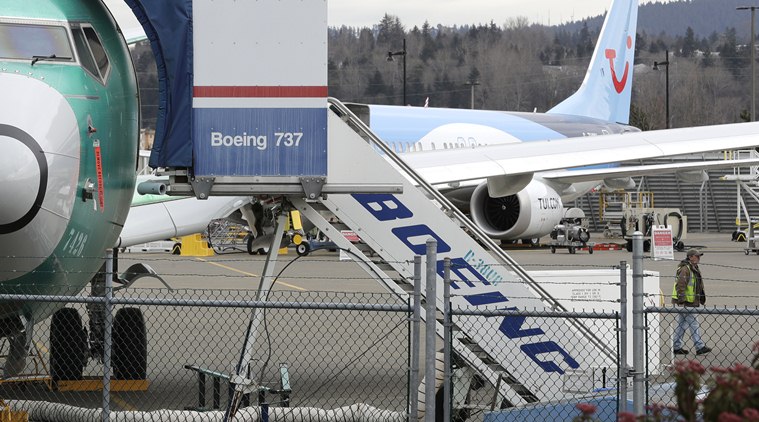Written by Pranav Mukul |New Delhi |Updated: March 17, 2019 7:17:55 am
The Boeing story: A MAX problem that started with minimal upgrades
Following the second crash involving a 737 MAX, which was operated by Ethiopian Airlines, regulators across the world began grounding the aircraft.

For a market that is estimated to be sized at $200 billion currently, Chicago-based Boeing lapped up orders worth $600 billion for its more than 5,000 of its flagship narrowbody aircraft 737 MAX at list prices. However, this orderbook has come under threat after two fatal accidents the bestselling aircraft in history witnessed in less than five months, less than two years after it entered into service. While both the accidents, which together saw 346 people being killed, are currently being investigated with final results still months away, some of the early readings point towards a problem that began more than a decade ago.
In the mid-2000s when oil prices began to rise, airlines started demanding for more fuel-efficient aircraft. In 2006, the two largest players in the sector – Boeing and Airbus – announced re-engined versions of their narrowbody workhorses that had been at the core of short-haul operations for carriers across the world. Both the Boeing 737 and the Airbus A320 had been immensely successful and the planemakers had opportunities in form of new engines in the market. Toulouse-based Airbus won the race and was able to launch the A320neo, or new engine option, equipped with either CFM LEAP 1A or Pratt & Whitney PW1100G powerplants.
Following its launch in December 2010, Airbus was able to sign deals for over 2,000 orders in the first two years. In July 2011, Airbus received a significant order of 130 A320neos and 130 A320ceos (current engine option) from the world’s largest airline American, which for the first time opted to purchase aircraft that was not Boeing-made. As per a New York Times report, American’s $38 billion aircraft purchase in 2011 also included order for 200 Boeing narrowbodies, half of which were to be equipped with a new and more fuel efficient engine, effectively indicating a commitment from Boeing to rehaul its 737 family instead of a completely new aircraft line. In August 2011, based on order commitments for 496 airplanes from five airlines, Boeing’s board of directors approved launch of a new engine variant of the 737.
The modernisation
In development, comparatively, both the A320neo and the 737 MAX were re-engineered versions of their predecessors, but it is pertinent to note that the A320 family that began in 1980s was a more modernised platform than the 737 family that was introduced back in 1960s. One of the main differences between the two was presence of a fly-by-wire control – an automated system of aircraft controls that allowed pilots to fly the aircraft using electronic signals transmitted via a wire, as opposed to manual controls using cables. The A320 was equipped with fly-by-wire controls, the 737 wasn’t.





































No hay comentarios:
Publicar un comentario